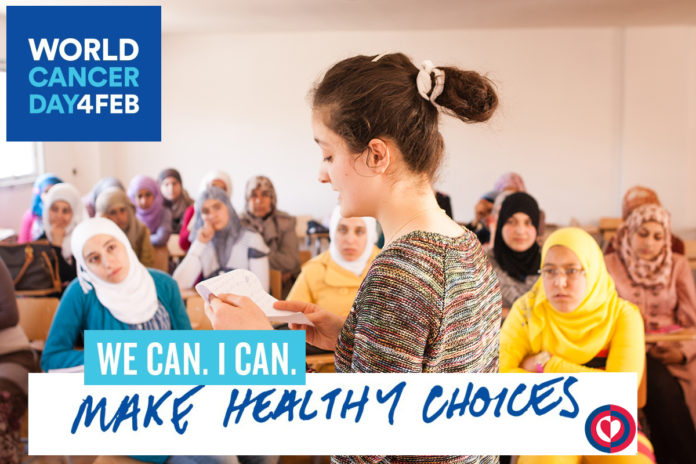World Cancer Day, organized by the Union for International Cancer Control (UICC) and celebrated each year on 4 February, is an opportunity to rally the international community to end the injustice of preventable suffering from cancer.
Guide to Cancer Early Diagnosis
Detecting cancer early can effectively reduce the mortality associated with cancer. In resource-poor settings, cancer is often diagnosed at a late-stage of disease resulting in lower survival and potentially greater morbidity and higher costs of treatment. Even in countries with strong health systems and services, many cancer cases are diagnosed at a late-stage. Addressing delays in cancer diagnosis and inaccessible treatment is therefore critical in all settings for cancer control.
Early diagnosis strategies improve cancer outcomes by providing care at the earliest possible stage and are therefore an important public health strategy in all settings. The barriers that delay cancer diagnosis must first be identified and assessed, and these factors may originate from patients to carers to health systems. There are three key steps to cancer early diagnosis:
- improve public awareness of different cancer symptoms and encourage people to seek care when these arise;
- invest in strengthening and equipping health services and training health workers so they can conduct accurate and timely diagnostics;
- ensure people living with cancer can access safe and effective treatment, including pain relief, without incurring prohibitive personal or financial hardship.
Effective programmes can then be implemented at various levels that include community engagement, improving diagnostic and referral capacity and ensuring access to timely, high-quality treatment.
This WHO Guide to cancer early diagnosis aims to help policy-makers and programme managers facilitate timely diagnosis and improve access to cancer treatment for all.
Lebanese National Cancer Registry
A cancer registry is defined as a location, be it an office or institution, where collection, storage, analysis and interpretation of data on cancer patients take place.
Lebanese Ministry of Public health collects data collected through two main channels: the capture system (passive reporting) and the recapture system (active reporting).
1) The capture system:
The capture system is based on physician’s routine reporting of cancer cases. Physician’s complete and sends forms:
– Directly from their clinic; or
– Indirectly through the MOPH Drug Dispensing Center (DDC), where anti-cancer drugs are distributed to eligible patients
2) The recapture system:
The recapture system is based on gathering information directly from histopathological and hematological laboratories. Data are collected in various ways, using hard or soft copies, or using database file or individual laboratory results depending on laboratories resources. This process is active since the NCR personnel actually contact the sites to obtain the necessary data. The recapture system validates and complements the capture approach.
The latest Lebanese National Cancer Registry can be found at this link
https://www.moph.gov.lb/userfiles/files/Esu_data/Esu_ncr/BA2015.HTM
Key facts
- Cancer is one of the leading causes of morbidity and mortality worldwide, with approximately 14 million new cases in 20121.
- The number of new cases is expected to rise by about 70% over the next 2 decades.
- Cancer is the second leading cause of death globally, and was responsible for 8.8 million deaths in 2015. Globally, nearly 1 in 6 deaths is due to cancer.
- Approximately 70% of deaths from cancer occur in low- and middle-income countries.
- Around one third of deaths from cancer are due to the 5 leading behavioral and dietary risks: high body mass index, low fruit and vegetable intake, lack of physical activity, tobacco use, and alcohol use.
- Tobacco use is the most important risk factor for cancer and is responsible for approximately 22% of cancer deaths.2.
- Cancer causing infections, such as hepatitis and human papilloma virus (HPV), are responsible for up to 25% of cancer cases in low- and middle-income countries3.
- Late-stage presentation and inaccessible diagnosis and treatment are common. In 2015, only 35% of low-income countries reported having pathology services generally available in the public sector. More than 90% of high-income countries reported treatment services are available compared to less than 30% of low-income countries.
- The economic impact of cancer is significant and is increasing. The total annual economic cost of cancer in 2010 was estimated at approximately US$ 1.16 trillion4.
- Only 1 in 5 low- and middle-income countries have the necessary data to drive cancer policy5.
Learn more: http://www.who.int/mediacentre/factsheets/fs297/en/





 Creative Commons Attribution 4.0 International license
Creative Commons Attribution 4.0 International license